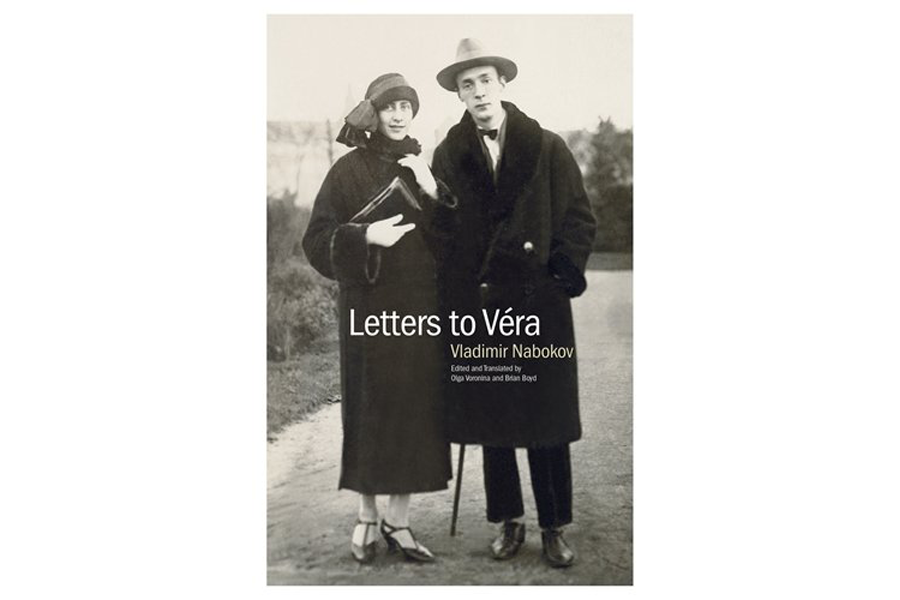'Letters to Vera' showcases the literary love story of the Nabokovs
Loading...
In the lion’s share of famous literary marriages, both members of the couple put pen to paper. Think of Ted Hughes and Sylvia Plath; Joan Didion and John Gregory Dunne; or Michael Chabon and Ayelet Waldman.
At first blush, the union of Vladimir Nabokov and the former Vera Slonim – who were married from 1925 until 1977, when Vladimir died at age 78 – does not seem to qualify. To start with, there was only one famed writer – Vladimir, not Vera – in this duo. He was lionized thanks to such sometimes-celebrated, sometimes-scandalous novels as “The Luzhin Defense” (1930), “Lolita” (1955), and “Pale Fire” (1962), among others. In contrast, Vera was seemingly content to spend her days as the spouse of a successful wordsmith (and mother to son Dmitri, born in 1934).
Yet observers have long pointed out that Vera was Vladimir’s all-around Girl Friday, helping him in matters such as office work and translation. As author Stacy Schiff puts it in the biography “Vera (Mrs. Vladimir Nabokov)”: “Lawyers, publishers, relatives, colleagues, friends, agreed on one point: ‘He would have been nowhere without her.’” For example – Schiff notes – were it not for Vera’s counsel, Vladimir would not have translated “Eugene Onegin”; and were it not for her decision to intercede, “Lolita” would have been lost to the sands of time.
Letters to Vera is a fascinating collection of correspondence in which we hear about Vladimir’s affection for Vera from the source. In letters stretching from two years before their marriage until one year before his death, Vladimir was rarely less than loving in writing to Vera about matters running the gamut from acquiring visas to raising young Dmitri. The cliché about writers is that they are a solitary, cynical lot, but Vladimir is the exception to the rule as he addressed the woman he variously called “my priceless happiness,” “my beloved and precious darling” or simply – and frequently – “my love.”
The book’s co-editors and co-translators – Olga Voronina and Brian Boyd – make clear that such private displays of affection were no act. “No marriage of a major twentieth-century writer lasted longer than Vladimir Nabokov’s,” Boyd writes in an introduction, adding that the author was moved to compose a poem for his future wife “after having spent only hours in her company,” and that the love was so lasting that he dedicated his very last book to her (as he had many others).
Again and again, Vladimir announced his ardor in terms far more inventive than most couples’ sweet nothings. In a 1924 letter, Vladimir noted the irony that he, whose “life’s work is moving a pen over paper,” stumbles in putting across his feelings for Vera – though he proceeded to do just that, comparing their romance to a pair of contented clouds. Vladimir wrote: “I cannot express these cirrus-cumulus sensations.”
The book is marked by a structural oddity that makes sense when fully considered. The majority of the communiqués were penned during stretches of time when circumstances separated Vladimir and Vera. For example, for a spell in June and July of 1926, Vera left the couple’s Berlin home for a stay in a sanitarium. “Vera,” Boyd writes, “had made her husband promise to send her a daily report – what he ate, what he wore, what he did – and Vladimir loyally obliged.” Amidst such ho-hum dispatches, though, Vladimir inserted wild and whimsical puzzles and brainteasers, which the co-editors gamely reproduce.
Correspondence soared in the 1930s, when Vladimir struck out to Belgium and France “to forge still stronger ties with the French literary world,” Boyd writes, adding that by 1937, with World War II looming, “Vera insisted to her husband that he had to flee Germany and find a way for the family to set up a life in France or England.” Letters were in abundance while the family was split up, but once the Nabokovs pulled up stakes for France and, eventually, the US, the missives subside. After all, it is unnecessary to exchange written communications with a partner you share breakfast with.
From the mid-1940s onward, Vladimir’s letters to Vera decrease in number, but the book’s herky-jerky format is handled well by the co-editors, who furnish detailed introductory comments, a useful timeline, and insightful appendices. The reader is never lost.
Throughout, Nabokov’s appeal is unflagging, whether writing, in 1936 from Paris to Berlin, of how he yearned to see Vera and Dmitri (“Just now wet snow has been falling, the Seine is yellow, the dampness immediately takes the shape of one’s feet, as soon as one goes out”) or apologizing, in 1937, for his penmanship (“I am writing in bed – hence the early-medieval perspective of my handwriting”). Best of all are the little notes meant to be read by Vera to Dmitri. A typical example: “MY MITEN’KA, THE STEAMBOAT TOSSED A LOT, THE CAPTAIN AND I FELT SICK, I HOPE YOU’RE BEHAVING WELL, MY LITTLE SUNSHINE, LOVE YOU.” Charmingly, the capital letters are interrupted by tiny drawings of, among other things, a steamboat and shining sun.
A wife – and, indeed, a son – who could inspire such caring and creative letters as these deserve to be included in Nabokov’s literary legacy.








